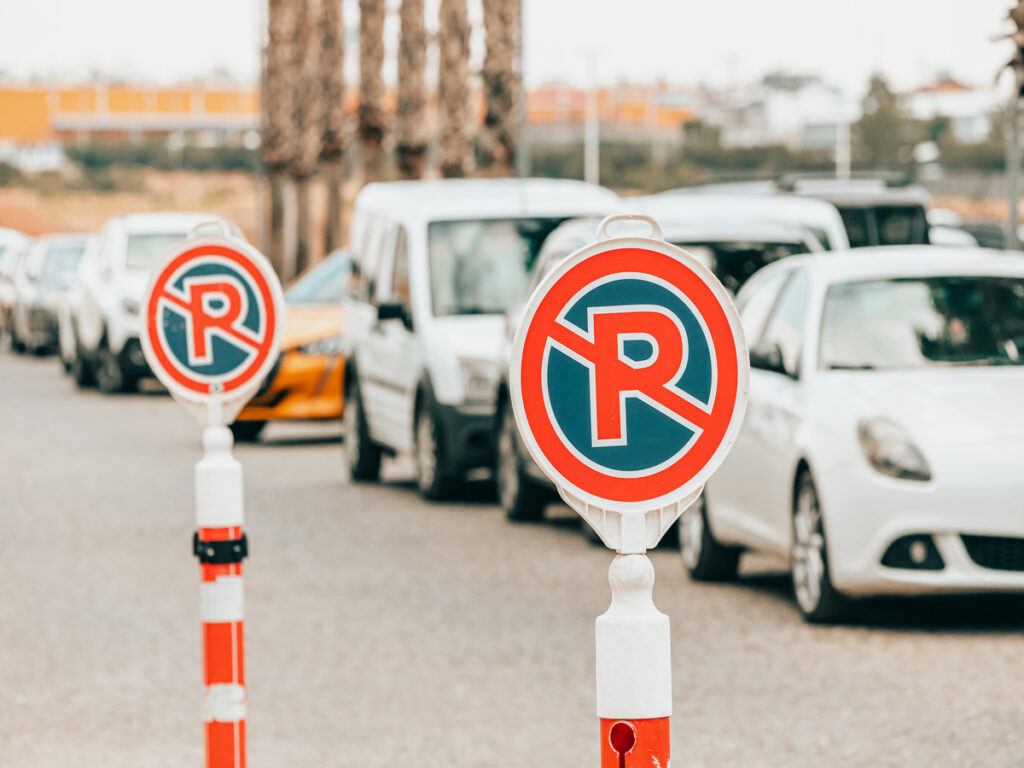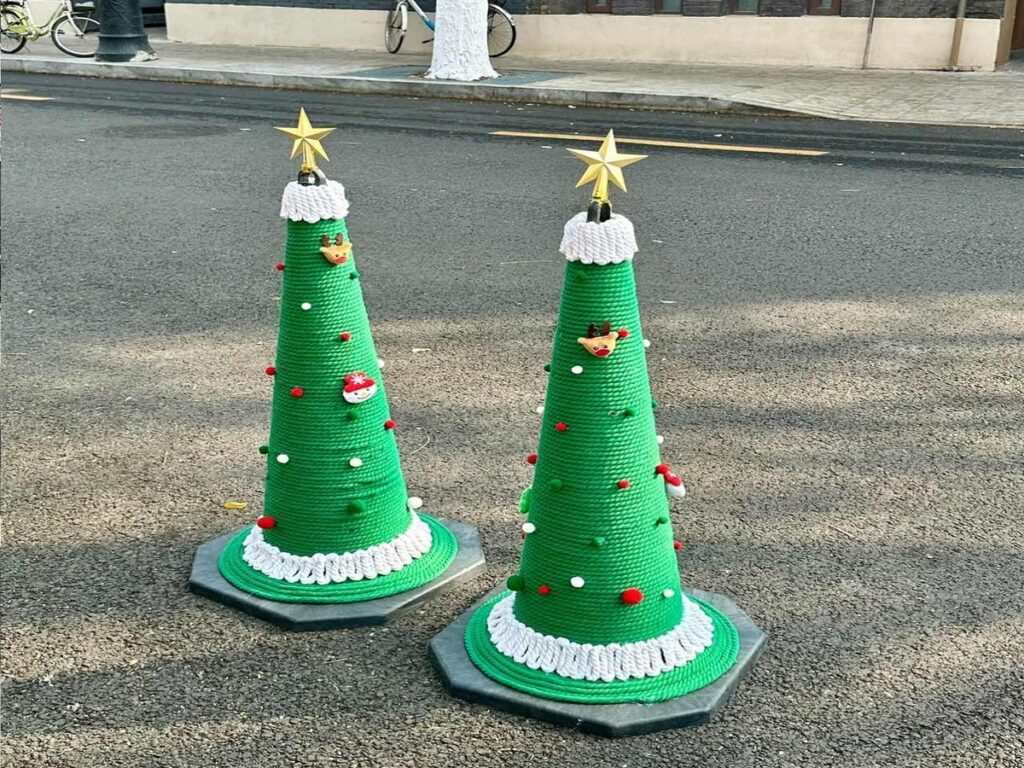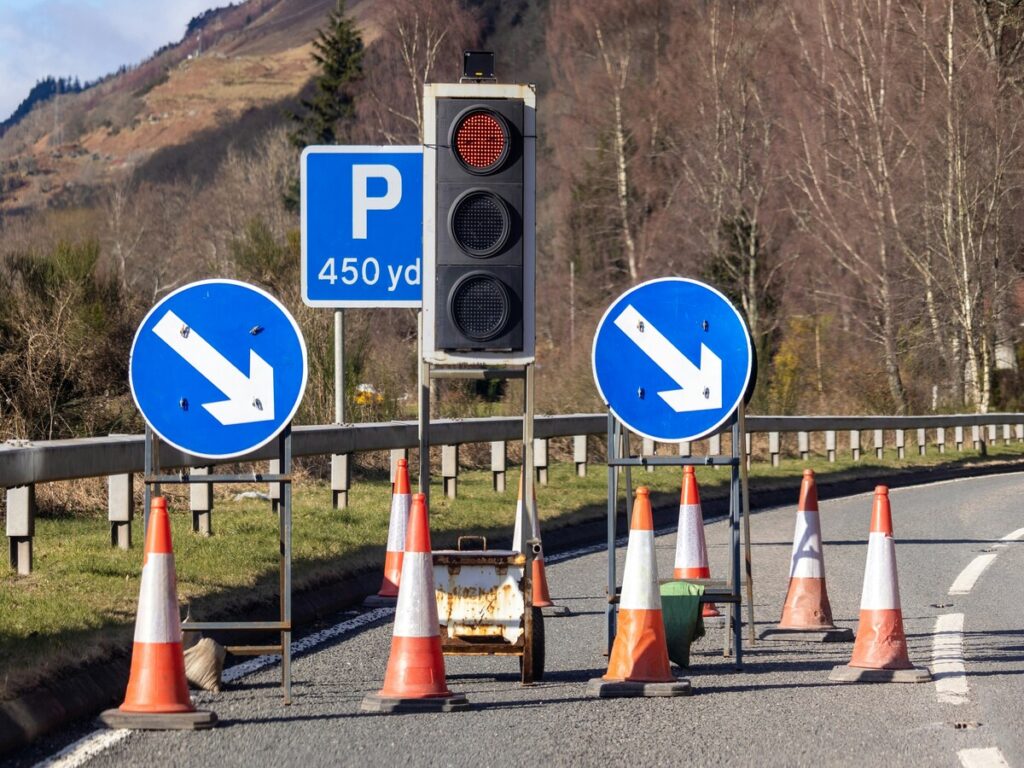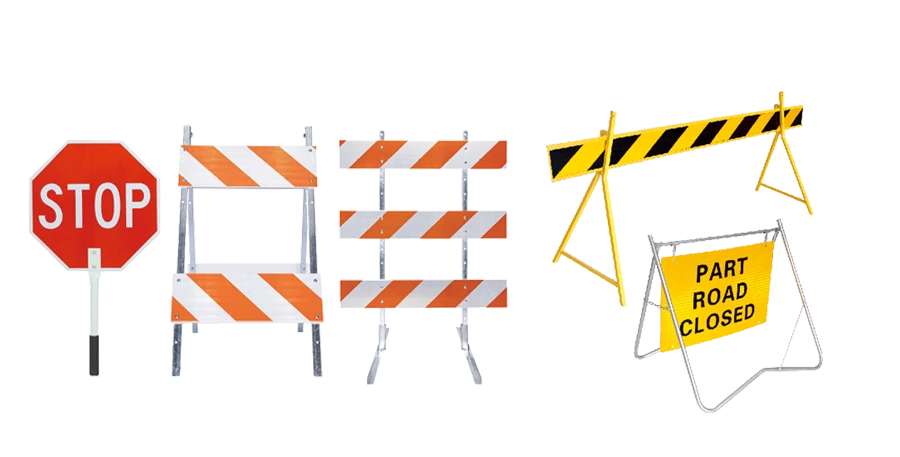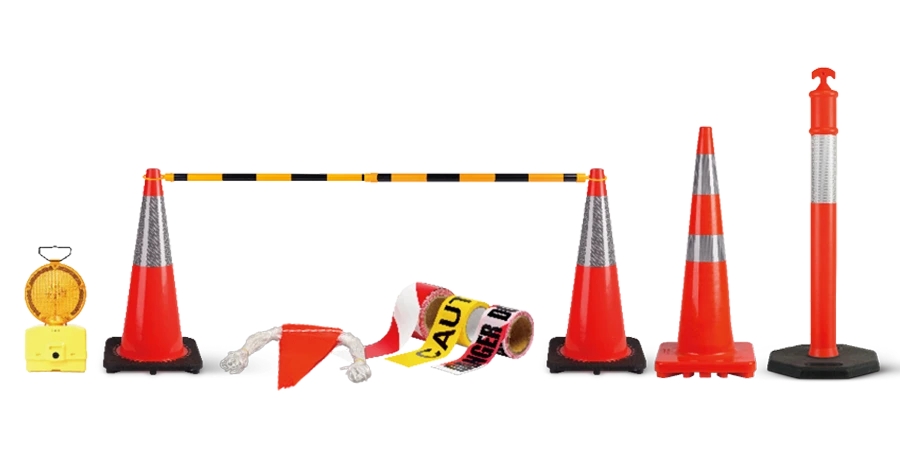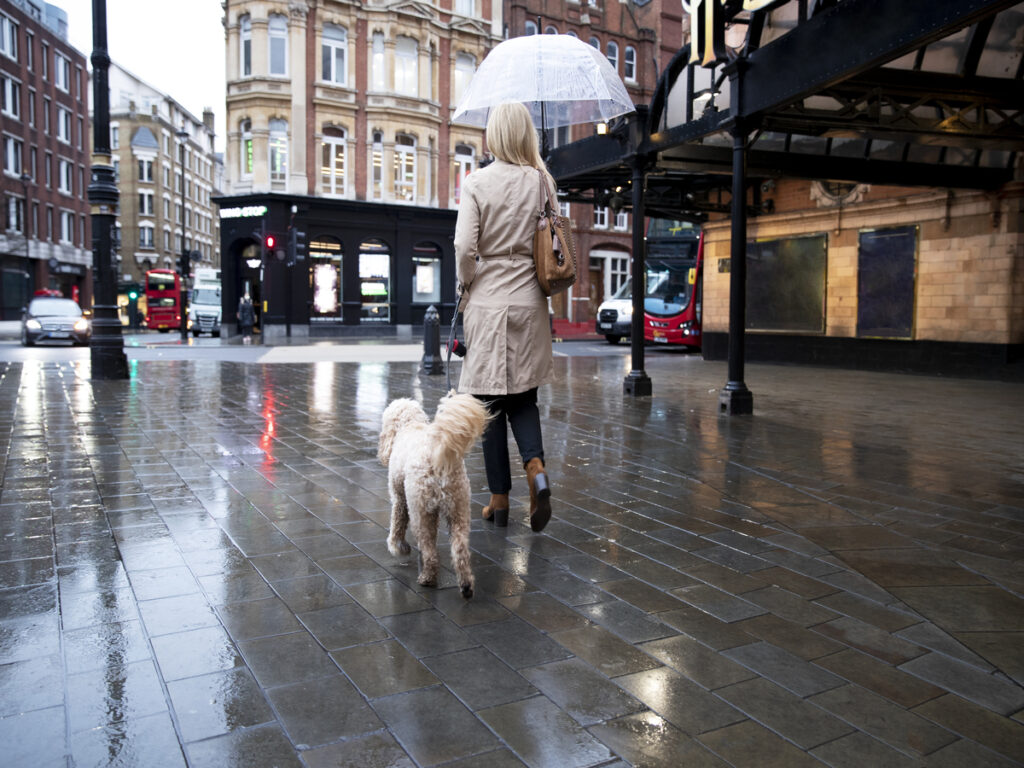
The Дождливая погода в Великобритании осуществляет содержание придорожной инфраструктуры, включая посты-оформители, более сложный. Частые дожди и высокая влажность приводят к быстрому износу материалов.. Пластиковые указатели должны выдерживать влажную погоду, оставаясь при этом видимыми и прочными.. Выбор прочных материалов и продуманный дизайн обеспечивают эффективную работу этих дорожных столбов.. Решение этих проблем способствует повышению безопасности дорог и сокращению работ по техническому обслуживанию..
ОПТРАФИК предлагает широкий выбор высококачественной продукции для обеспечения безопасности дорожного движения, включая прочные разграничительные стойки, предназначенные для работы в сложных погодных условиях. Пластиковые указатели OPTRAFFIC изготовлены из прочного, Погодные материалы, обеспечение видимости и прочности даже в дождливую погоду, среда с высокой влажностью. Эти дорожные посты рассчитаны на длительную эксплуатацию и повышают безопасность дорожного движения, одновременно сокращая затраты на техническое обслуживание..
Ключевые выводы
- Выбирайте устойчивые к атмосферным воздействиям пластики, такие как обработанный полипропилен и смеси этиленвинилацетата, для длительного использования под дождем..
- Используйте стойки ярких цветов и светоотражающие полосы, чтобы оставаться видимыми под дождем или при тусклом свете..
- Выбирайте столбы с прочным основанием и прочными креплениями, чтобы оставаться устойчивыми при ветре и дожде..
- Выбирайте стойки с гладкой поверхностью для легкой очистки., держать маркеры в чистоте.
- Убедитесь, что сообщения соответствуют правилам безопасности Великобритании и имеют соответствующие сертификаты надежности..
Существенные соображения для постов-оформителей

Устойчивый к атмосферным воздействиям пластик для влажных условий
Для дождливой погоды в Великобритании, выбирайте пластик, устойчивый к воде. Эти материалы остаются прочными даже при длительном намокании.. Модифицированный полипропилен — отличный выбор, поскольку он устойчив во влажных условиях.. Он не трескается и остается гибким в холодную зиму.. Композиты EVA также хороши для влажных помещений.. Они естественным образом противостоят плесени., что делает их идеальными для черных и желтых маркеров полос или разделителей велосипедных дорожек.. Использование водостойкого пластика обеспечивает безопасность и полезность разметки в течение всего года..
УФ-стабилизированный полиэтилен и полипропилен
УФ -защита важно для столбов, обращенных к солнцу и дождю. Без этого, пластик со временем тускнеет и ослабевает. Полиэтилен и полипропилен с УФ-стабилизаторами сохраняют цвет и прочность в суровых погодных условиях.. Яркие цвета, такие как желтый, делают разметку дорожек более заметной.. УФ-стабилизированный пластик также предотвращает отслаивание отражающих листов., держать их чистыми дольше. Ищите столбы с термопрессованными светоотражающими полосами, чтобы они прослужили в изменяющуюся погоду Великобритании..
Альтернативы HDPE для климата Великобритании
ПНД часто используется для столбов, но плохо работает на мокрой дороге, холодная погода. Вместо, попробуйте армированный пластик с покрытием ТПУ. Эти материалы гибкие и устойчивы к ударам., что делает их отличными для велосипедных дорожек. ТПУ покрытия остановить попадание воды, что помогает предотвратить трещины. Другой вариант — двухцветное литье под давлением.. Этот метод предотвращает отслаивание и сохраняет яркость цветов черных и желтых разметок.. Выбор более качественных материалов продлит срок службы ваших маркеров и их эффективность..
Особенности видимости в дождливую погоду
Светоотражающие полосы для условий низкой освещенности
Дождливые дни в Великобритании часто приносят темноту, облачное небо. Это уменьшает естественное освещение, делая светоотражающие полосы очень важными. Эти полосы светят контровым светом автомобильных фар.. Это помогает водителям видеть разметку полосы движения при тусклом освещении.. Британское исследование показало, как светоотражающие полосы работают при слабом освещении.. Выяснилось, что густые облака влияют на то, насколько хорошо они отражают свет.. Более короткие световые волны, как те, что в светоотражающих повязках, работают лучше, чем более длинные. Выбор столбов с хорошими светоотражающими полосами делает дороги безопаснее в дождливую погоду..
Яркие цвета для видимости в дневное время
Яркие цвета, такие как желтый и оранжевый, легко увидеть днем.. Они выделяются на фоне серого неба и мокрых дорог.. Желтая светоотражающая лента особенно полезна.. Сочетает в себе яркий цвет и отражение света.. Благодаря этому публикации будут видны как при дневном, так и при тусклом свете.. Выбирайте публикации с яркими цветами, чтобы сделать их более эффективными в меняющуюся погоду в Великобритании..
Противотуманные покрытия для повышения четкости
Дождь и влажный воздух могут вызвать запотевание отражающих поверхностей.. Из-за этого их труднее увидеть. Покрытие против запотевания предотвращает накопление влаги.. Они сохраняют светоотражающие полосы чистыми и работают хорошо.. Эти покрытия отлично подходят для влажных или влажных помещений.. Они помогают столбам оставаться видимыми даже в очень сырую погоду.. Выбор стоек с противозапотевающим покрытием обеспечивает хорошую видимость круглый год..
Устойчивость и установка во влажных условиях
Утяжеленные основания для защиты от ветра и дождя
Сильный ветер и дождь могут опрокинуть слабые столбы.. Чтобы остановить это, выбирайте столбы с тяжелыми основаниями. Эти основания обеспечивают устойчивость столбов за счет понижения их центра тяжести.. Такая конструкция помогает столбам оставаться в вертикальном положении во время шторма.. Тяжелые базы отлично подходят для временных сооружений, таких как строительные площадки или барьеры для мероприятий.. Они также облегчают перемещение столбов при необходимости.. Выбор столбов с тяжелыми основаниями гарантирует, что они останутся на месте в плохую погоду..
Надежные системы крепления для устойчивости
Для постоянного использования, прочные системы крепления очень важны. Эти системы прочно фиксируют столбы к земле.. Это не дает им двигаться или падать.. Исследования показывают, что надежные крепления сокращают количество несчастных случаев 9.2% в плохую погоду. Они также снижают травматизм на 14.9% и вылетает из-за 5.5% в сильный дождь. Стойки с хорошими креплениями уменьшают количество аварий при съезде с дороги на поворотах. 15%. Выбор столбов с прочными креплениями повышает безопасность дорог и обеспечивает устойчивость ограждений..
Гибкие стойки для поглощения ударов
В оживленных областях, гибкие посты — хороший вариант. Эти дорожные столбы сгибаются при ударе и возвращают свою форму.. Это предотвращает повреждение как столба, так и транспортных средств.. Они также продолжают работать после небольших сбоев.. Гибкие стойки хорошо работают в сырую погоду., где скользкие дороги вызывают больше аварий. Они действуют как мягкий барьер, защита водителей и дорог. Выбор гибких стоек повышает безопасность и продлевает их срок службы в суровую погоду..
Обслуживание и долговечность постов разграничения
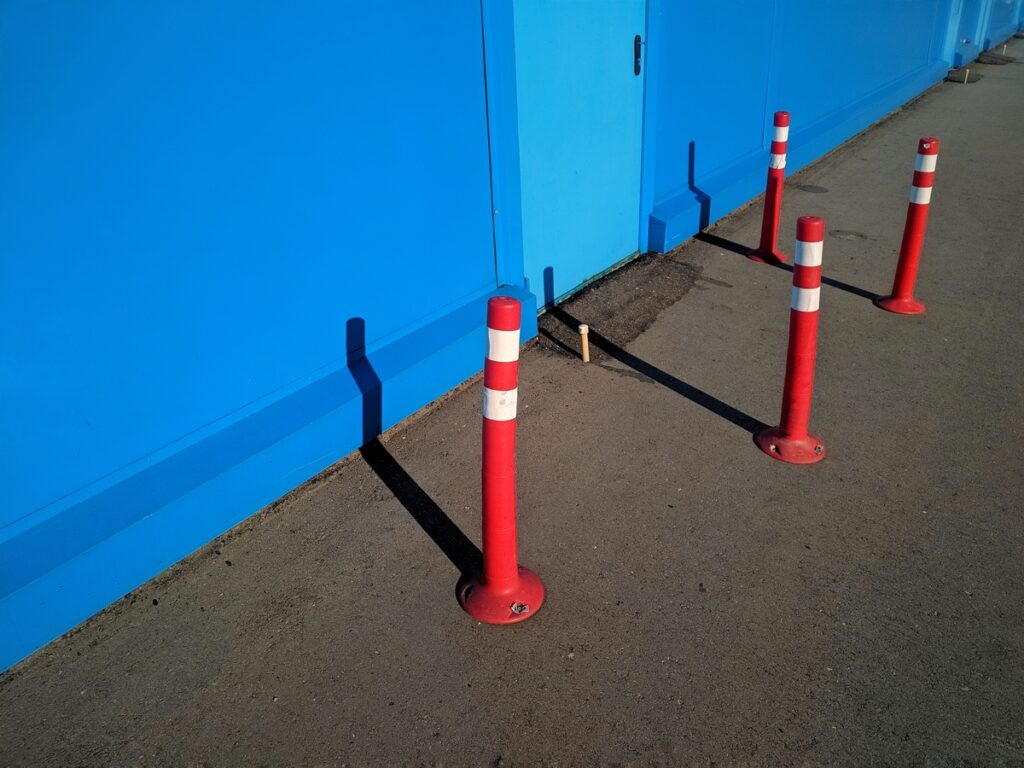
Гладкие поверхности для легкой очистки
Из-за дождя в Великобритании грязь часто прилипает к разметке полос движения.. Из-за этой грязи дорожную разметку труднее увидеть.. Выбор столбов с гладкой поверхностью помогает поддерживать их в чистоте.. Эти поверхности предотвращают прилипание воды и грязи.. Уборка становится быстрее и проще. Используйте мягкую щетку и мягкое мыло для очистки без вреда.. Регулярная уборка обеспечивает чистоту разметки полос и повышает безопасность дорог..
Регулярно проверяйте наличие повреждений, вызванных погодными условиями
Проверка дорожных столбов часто помогает обнаружить повреждения от дождя или ветра.. Ищите трещины, угасание, или отслаивание на разметке полосы движения. Проверьте, насколько посты по-прежнему гибки для обработки воздействий.. Проверьте светоотражающие детали на предмет отслаивания или износа.. Исправление небольших проблем на ранней стадии останавливает более серьезные проблемы позже. Осматривайте столбы после сильного дождя или зимы, чтобы поддерживать их в хорошем состоянии..
Прочная светоотражающая пленка для длительного использования
Отражающая лист помогает водителям видеть разметку полосы движения в условиях низкой освещенности. Дождь и солнечный свет могут ослабить клей., вызывая его шелушение. Выбирайте стойки с термопрессованной светоотражающей пленкой для лучшего прилипания.. Это сохраняет светоотражающие части четкими и прочными.. Хорошая светоотражающая пленка прослужит дольше в суровую погоду в Великобритании.. Использование прочных материалов снижает затраты на ремонт и делает дороги безопаснее..
Соответствие британским стандартам безопасности движения по полосе движения
Обзор правил безопасности дорожного движения Великобритании
В Великобритании, правила безопасности дорожного движения направлены на предотвращение несчастных случаев. Эти правила гарантируют, что разделители полос и средства дорожного движения соответствуют высоким стандартам.. Ограничительные стойки помогают безопасно направлять автомобили и велосипеды., Даже в плохую погоду. Они должны оставаться сильными и заметными, чтобы следовать этим правилам..
Светоотражающие маркеры очень важны для лучшей видимости.. Они отражают свет фар автомобиля., делая полосы и повороты более четкими. Это особенно полезно на темных дорогах или во время сильного дождя.. На дорогах с отражателями меньше аварий, чем на дорогах без них.
| Описание доказательств | Воздействие на безопасность |
|---|---|
| Светоотражающие маркеры отражают свет фар., делая полосы и повороты более четкими. | Помогает водителям лучше видеть в условиях низкой освещенности, уменьшение сбоев. |
| Отражатели жизненно необходимы на темных дорогах и в плохую погоду.. | Направляет водителей безопасно, снижение рисков. |
| На дорогах с отражателями меньше аварий, чем на дорогах без них.. | Доказывает, что отражатели помогают снизить количество несчастных случаев. |
Соответствие стандартам BS EN для постов разграничителей
Сообщения о разграничении в Великобритании должны следовать Стандарты BS EN хорошо работать. Эти правила проверяют такие вещи, как прочность материала., видимость, и долговечность. Гибкие стойки хороши тем, что они остаются видимыми в любую погоду.. Они также справляются с неровностями, поэтому они хорошо работают в оживленных местах.
Использование стоек, соответствующих этим правилам, снижает затраты на ремонт и повышает безопасность.. Например, Штифты с покрытием ТПУ устойчивы к воде и ударам., длится дольше. Они идеально подходят для управления дорожным движением и обеспечения безопасности велосипедистов на оживленных дорогах..
Сертификация соответствия законодательству
Следовать закону, Должности разграничителей нуждаются в надлежащей сертификации. Это доказывает, что они соответствуют британским правилам безопасности в отношении разделителей полос и дорожных инструментов.. Сертифицированные посты созданы для того, чтобы выдерживать суровые погодные условия Великобритании..
При выборе постов, проверьте наличие сертификатов, подтверждающих, что они безопасны для дорожного движения и велосипедов.. Сертифицированные посты делают езду на велосипеде безопаснее и помогают предотвратить несчастные случаи.. Они гарантируют, что ваши разделители полос работают хорошо и соответствуют правилам Великобритании..
Выбор лучших опорных столбов для влажной погоды в Великобритании требует тщательного обдумывания.. Сосредоточьтесь на этих основных моментах:
- Качество материала: Выбирайте прочный пластик, устойчивый к воде и солнечному свету..
- Видимость: Убедитесь, что светоотражающие полосы и яркие цвета выделяются.
- Стабильность: Выбирайте столбы с тяжелыми основаниями и надежными системами крепления..
- Обслуживание: Выбирайте гладкие поверхности и долговечные светоотражающие детали..
- Согласие: Убедитесь, что они соответствуют правилам безопасности Великобритании и имеют сертификаты..
Использование жестких, Устойчивые к атмосферным воздействиям разграничительные столбы делают дороги безопаснее и экономят деньги. Сосредоточьтесь на прочности и видимости, чтобы они были полезны в любую погоду.. 🌧️
Часто задаваемые вопросы
Чем хороши пластиковые указатели для влажной погоды в Великобритании?
Пластиковые столбы устойчивы к воде и остаются прочными в дождливую погоду.. Такие материалы, как модифицированный полипропилен и композиты EVA, хорошо работают во влажных и холодных условиях.. Эти столбы также остаются заметными благодаря ярким цветам и светоотражающим полосам., обеспечение безопасности полос во время дождя.
Как светоотражающие полосы помогают при слабом освещении?
Светоотражающие полосы отражают свет фар автомобиля.. Благодаря этому разметку полосы движения легче увидеть в пасмурные дни или ночью.. Термопрессованная светоотражающая пленка удерживает полосы на месте., поэтому они хорошо работают даже в сильный дождь или туман.
Зачем нужны тяжелые основания для устойчивости?
Тяжелые основания предотвращают падение столбов при сильном ветре или дожде.. Они понижают центр тяжести, держать посты стабильными. Это полезно для временных разметок полос на строительных площадках или барьеров для мероприятий в плохую погоду..
Как сохранить разграничительные столбы в хорошей форме во время дождя??
Часто очищайте столбы, чтобы удалить грязь от дождя и грязи.. Используйте мягкие щетки и мягкое мыло, чтобы избежать повреждений.. Проверьте наличие трещин, пилинг, или выцветание после сильного дождя. Это обеспечивает чистоту и работоспособность разметок в течение всего года..
Должны ли публикации разграничителей соответствовать правилам Великобритании??
Да, посты должны соответствовать стандартам BS EN, чтобы оставаться безопасными и прочными.. Сертифицированные стойки справляются с суровыми погодными условиями Великобритании и хорошо ориентируются по полосам движения.. Выбор сертифицированных постов снижает затраты на ремонт и делает дороги безопаснее для всех..

